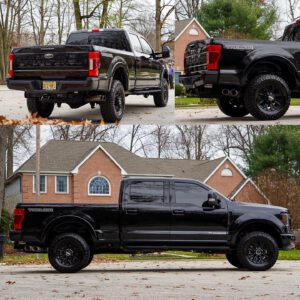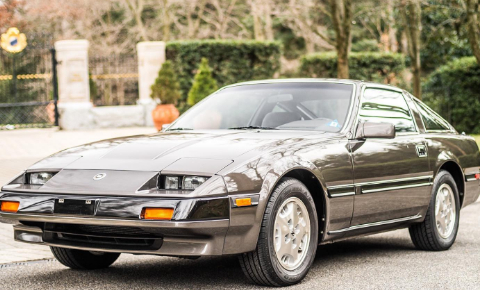If you are a car enthusiast, you know how important it is to maintain the appearance of your vehicle. One of the most crucial aspects of maintaining your car’s appearance is keeping its paint in pristine condition. Despite your best efforts using automatic car washes or manual washing, your car’s paint can still get damaged due to various factors like scratches, swirl marks, and oxidation. That’s where paint correction services come in.
The stage 1 paint correction process involves removing imperfections from your car’s paintwork to restore its original shine. We will explore the different types of paint correction and when to use them.
What is paint correction?
Paint correction is a process that involves removing defects or imperfections from the top layer of your car’s paintwork to restore its original shine. This process involves using abrasive compounds, a microfiber buffing pad, and machines to remove a small layer of the car’s clear coat. The result is a smooth, even, and reflective surface that makes your car look like it just came out of the showroom.

Different types of paint correction
There are different types of paint correction, and each type varies in the level of correction and the tools used. Here are the three most common types of paint correction:
Machine Polishing
Machine polishing is the most common type of paint correction NJ. It involves using a machine polisher for paint defect removal from the vehicle’s painted surfaces. Machine polishing is further divided into three subcategories:
Cutting
Cutting is the most aggressive form of paint correction. It involves using a heavy-cut compound and a cutting pad to remove severe scratches, swirl marks, and other imperfections. This process removes a significant layer of clear coat from the car’s paint, so it should only be used when other methods are insufficient.
Polishing
Polishing is a milder form of paint correction. It involves using a lighter compound and a polishing pad to remove mild to moderate imperfections from the car’s paint. Polishing removes a thin layer of clear coat, making it ideal for cars with minor paint defects.
Finishing
Finishing is the least aggressive form of paint correction. It involves using a fine compound and a finishing pad to remove light swirl marks and minor imperfections from the car’s paint. Finishing does not remove any clear coat, making it the ideal method for maintaining a car’s paint.
Wet Sanding
Wet sanding is a more aggressive form of paint correction. It involves using wet sandpaper to remove deeper scratches and imperfections from the car’s paint. Wet sanding should only be used when other methods fail to correct the paint defects. Wet sanding should be done by a professional, as it requires special tools and techniques.
Clay Bar Treatment
Clay bar treatment is a non-abrasive form of paint correction. It involves using a special clay bar and lubricant to remove contaminants from the car’s paint, leaving a smooth surface.
When to Use Different Types of Paint Correction
Different types of paint correction are used for different levels of paint defects. Here’s when to use each type of paint correction:
Mild Imperfections
If your car has minor swirl marks, light scratches, or other mild imperfections, you can use a polishing compound with a polishing pad to remove them. Polishing is the least aggressive form of paint correction and should be used first before trying other methods.
Medium Imperfections
If your car has minor scratches, deeper swirl marks, or other moderate imperfections, you can use a heavy-cut compound and a cutting pad to remove them. Cutting is more aggressive than polishing and removes a significant layer of clear coat, making it ideal for moderate imperfections.
Severe Imperfections
If your car has severe scratches, heavy swirl marks, or other severe imperfections, you may need to use wet sanding. Wet sanding involves using wet sandpaper to remove a significant layer of clear coat, making it ideal for severe imperfections. Wet sanding should only be done by a professional, as it requires special tools and techniques.
Benefits of Auto Paint Correction
The paint correction has several benefits, including:
Restores the original shine of the car’s paint.
Increases the resale value of the car
Protects the paint from further damage.
Removes contaminants from the car’s paint
Maintaining the appearance of your vehicle’s paint is essential, and paint correction is one of the most effective ways to do it. By knowing the different types of paint correction and when to use them, you can keep your car’s paint looking like new for years to come.
FAQs
What is the difference between machine polishing and wet sanding?
Machine polishing involves using a machine polisher and abrasive compounds to remove imperfections from the car’s paint. Wet sanding involves using wet sandpaper to remove deeper scratches and imperfections. Wet sanding is more aggressive than machine polishing and should only be done by a professional.
How often should I perform paint corrections on my car?
How frequently you use your automobile, the weather where you drive, and how well you take care of it all affect how often you need to get the paint corrected. To maintain the appearance of your car, it is generally advised to have paint correction done once a year.
Can paint correction damage my car’s paint?
Paint correction shouldn’t harm your car’s paint if done properly. If done incorrectly or by a novice, it could further harm the paint of your car.
Is paint correction only for high-end cars?
No, paint correction is for any car that has imperfections in its paint. It doesn’t matter if it’s a high-end car or a regular car; paint correction can help restore its appearance.
Can I do paint correction at home?
Yes, you can do paint correction at home, but it’s recommended that you have some experience and knowledge about the process. If you’re not confident, it’s better to take your car to a professional.
What is the difference between ceramic coating and paint correction?
A ceramic coating is a protective layer applied to a car’s paint to protect it from environmental damage, such as UV rays, bird droppings, and dirt. It does not remove any imperfections or scratches from the paint. On the other hand, paint correction involves removing imperfections from the car’s paint to restore its original shine. While both ceramic coating and paint correction can enhance a car’s appearance, they serve different purposes. The ceramic coating protects the paint, while paint correction corrects imperfections.


